Late in 2003 treasure was uncovered in Mexico City. Months before he died in 1957, Diego Rivera had begun to stash away sensitive political documents, packing them into a bathroom in La Casa Azul, the house he had shared with Frida Kahlo between 1929 and 1954. As well as securing his own makeshift archive, he oversaw the careful gathering of Kahlo’s possessions – over 6,500 photographs, 22 documents and 300 articles of clothing – which, locked away in trunks and wardrobes, would remain untouched for nearly half a century. Rivera could not have foreseen the sensation these belongings would generate on a global scale when they emerged almost half a century later. Frida Kahlo has become an icon: a figurehead for strong womanhood, for gender fluidity, for empowerment and survival in the face of disability and domineering masculinity.
The V&A’s current exhibition, the first display of Kahlo’s personal artefacts outside of Mexico, certainly has the artist’s contemporary image in mind. Its unusual offering aims to bring a fresh dimension to Frida Kahlo as a popular figure and to undo some of the historical and personal flattening that inevitably comes with iconicity. (We need only recall Theresa May’s Frida-faced bracelet, and the political irony bound up in that particular juxtaposition, to appreciate the icon at its flattest.)
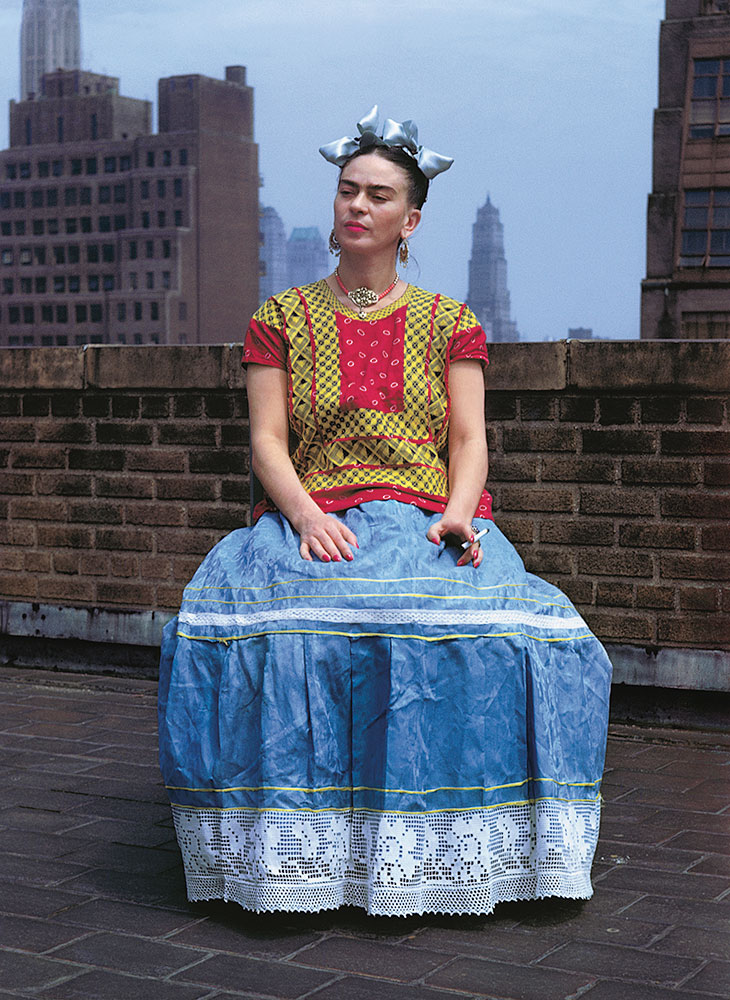
Frida Kahlo in New York (1930), Nickolas Muray. © Nickolas Muray Photo Archives
The exhibition draws us in with a selection of early photographs of Kahlo and her family, many taken by her father, a professional photographer. We are made aware, from the first, of the connections between Kahlo’s family history, the political turmoil that coloured her youth and her subsequent experimentation with portraiture and self-fashioning. It’s a well-known fact that Kahlo would revise her year of birth (1907, according to her birth certificate), to align it with the eruption of the Revolution in 1910; what we don’t tend to appreciate is the way in which she consciously drew on Mexico’s religious and cultural traditions to shape her political and self-expression. Kahlo may have scoffed at a photograph of her solemn younger self dressed elaborately for church but, as time went by, forms of ritual, Catholic iconography, and cultural memory would structure her highly personal responses to her changing country.
Kahlo’s regard for tradition was widely shared. With the revolutionary challenge to Mexico’s wealthy elite came an artistic movement determined to grow a new state from the country’s grassroots, its provincial practices and its ancient, pre-Columbian past. Many of her contemporaries – from Rivera to Roberto Montenegro, María Izquierdo, and Tina Modotti – sought to challenge Mexico’s brutal colonial past and imagine its future through sweeping public murals depicting Aztec peoples, or still lifes of traditional dress and native artefacts. Kahlo’s approach was different, and uniquely vital: a political aesthetic thoroughly lived.
This lived, living art comprises the heart of the exhibition. Beyond early photographs, rooms open out on to costume and textile. Unfurled and framed behind glass, the great swathes of Kahlo’s intricately patterned shawls reveal her admiration of the craft of the Tehuantepec region, and the Tehuana, the matriarchs at the head of that rural community. Hefty strings of mottled jade beads, excavated from pre-Columbian burial sites and arranged by the artist’s own hand, lend historical weight to Kahlo’s striking adornments. Portraits such as Nickolas Muray’s Frida Kahlo in New York (1939) or Kahlo’s own Self-Portrait as a Tehuana (1943) – in which Kahlo, decked in traditional dress, seeks out her viewer’s response with a penetrating stare – offer overt challenges to the appropriative colonial gaze that Kahlo would find in modern New York and on the European art scene, as well as in the violences of the Spanish conquistadors.
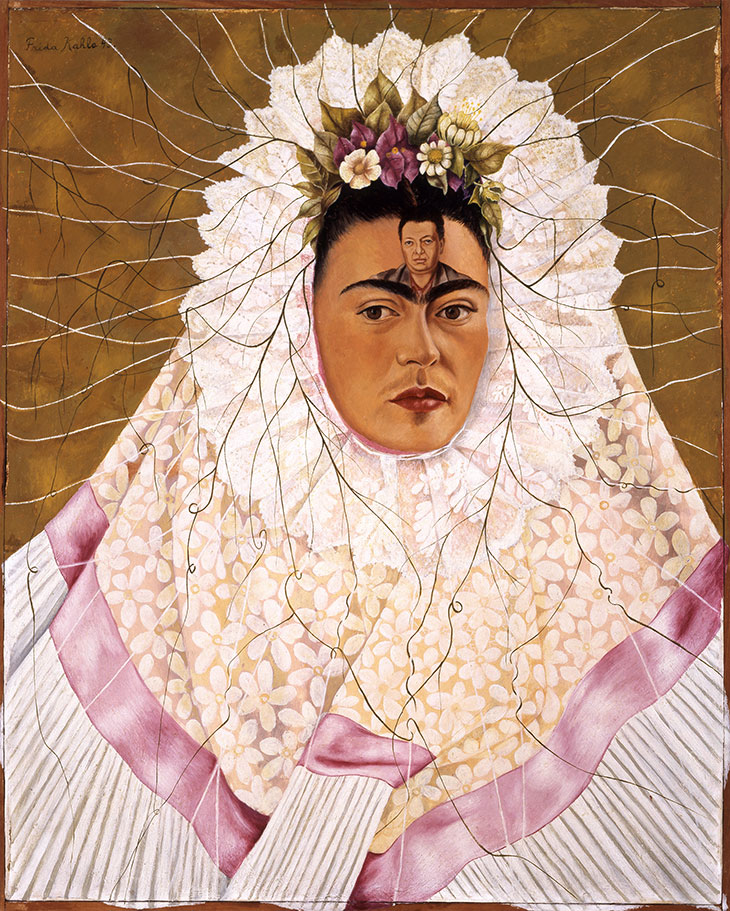
Self-Portrait as a Tehuana (1943), Frida Kahlo. © The Jacques and Natasha Gelman Collection of 20th-Century Mexican Art and The Vergel Foundation.
Seeing Kahlo’s costumes beside so many of the self-portraits in which they feature does much to bring the intimate nature of both her art and politics into focus. Cigarette-burns in bright fabric and patches of paint on ancient stone attest, for the exhibition’s curators, not to performativity but to Kahlo’s immersive occupation of culture and history. In this light, the symbolism of her art, its status as a universal icon, becomes precarious. Focusing on the particularities of her life and experience, we are encouraged to read and re-read the Frida Kahlo we thought we knew, and reassess the ways in which we make her stand for messages and meanings.
This response is heightened in the room dedicated to Kahlo’s disability, the most powerful part of the exhibition. With one of her legs stunted by a bout of polio she contracted as a child, Kahlo also suffered throughout her life from injuries sustained during a traffic accident when she was 18. Leather corsets ribbed with straps and buckles remind us of the extent of her spinal injuries. Plaster corsets decorated in vibrant colours with hammer and sickle and a prosthetic leg, complete with a scarlet boot and Chinese embroidery, speak of a creativity borne of pain and resilience. The meaning of Kahlo’s art emerges where the reality of the body and pictorial representation meet; we learn to see Frida and Mexico, Frida and womanhood, all at once.
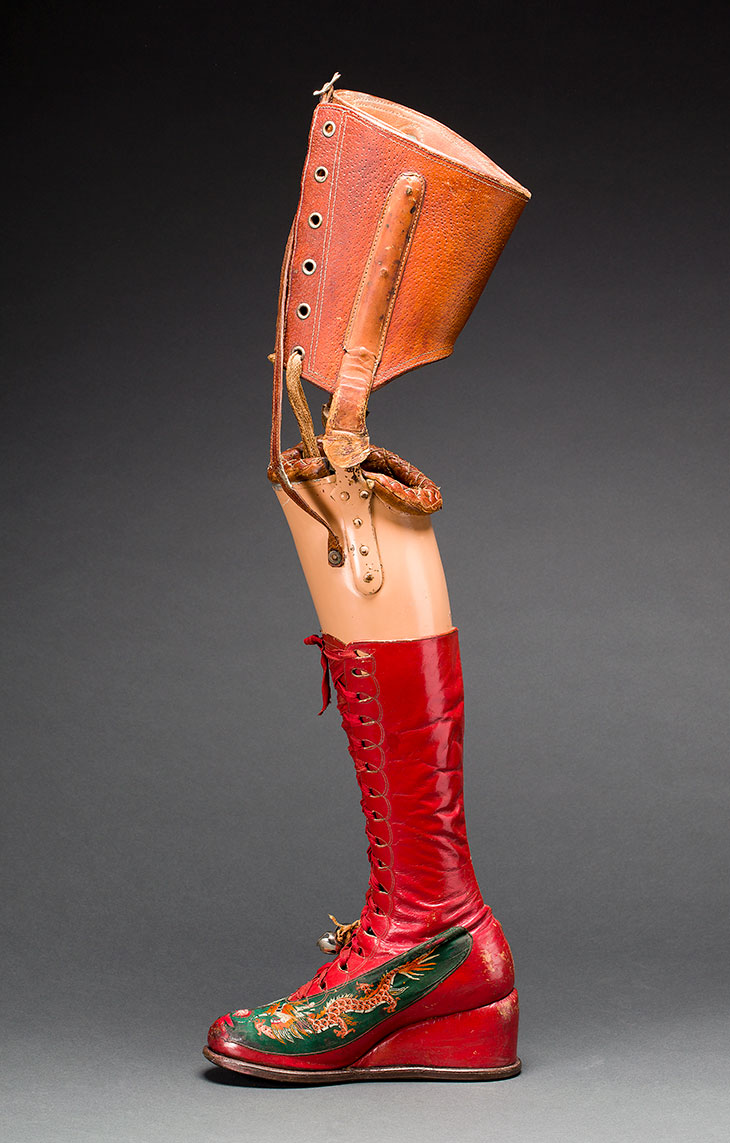
Prosthetic leg with leather boot. Photo: Javier Hinojosa; © Diego Riviera and Frida Kahlo Archives, Banco de México, Fiduciary of the Trust of the Diego Riviera and Frida Kahlo Museums
For all its virtues, the exhibition walks a fine line between recuperation and veneration. One weakness lies in the questions not asked, particularly about the politics of cultural immersion practised by Kahlo and other artist-advocates of what became the post-revolutionary Mexicayotl movement. Kahlo’s pre-Columbian costumes and ornaments conjure a tricky but potentially productive tension between the status of personal possession and public or national artefact. They may also raise questions about the nature of the artistic elite’s custodianship of Mexican culture. Kahlo and Rivera’s collection of votive paintings, images painted by Mexicans to give thanks for miracles of favours received from God, could have prompted similar debates about the relationship between popular art and an emerging modernist scene in Mexico, and how far that relationship was reciprocal.
More notable still is the way in which Kahlo’s objects are displayed in and around this exhibition. Prosthetics and corsets are placed in vitrines shaped like the four-poster bed from which the ailing Kahlo painted some of her most famous works. Appearing directly after a wall of votive paintings, these vitrines appear likewise to enshrine Kahlo’s belongings, to cast them as relics before which we stand, awestruck. Veneration – or, indeed, a form of idolisation – is an inevitable part of any exhibition. But the elevation of mannequins bearing Kahlo’s costumes up and above the viewer’s gaze, like the replica shawls one might buy in the gift shop afterwards, obscures the particularity that the exhibition seeks to recuperate in other ways. Perhaps, though, the distance created within the exhibition is intentional: a way of provoking us to question how we take Frida Kahlo and what we make of her, how we read her or appropriate her, how we flatten her or allow her her own dimensions. Perhaps this is a way of making us wonder whether, until now, we really knew Frida Kahlo at all.
‘Frida Kahlo: Making Her Self Up’ is at the Victoria & Albert Museum, London, until 4 November 2018.
Unlimited access from just $16 every 3 months
Subscribe to get unlimited and exclusive access to the top art stories, interviews and exhibition reviews.

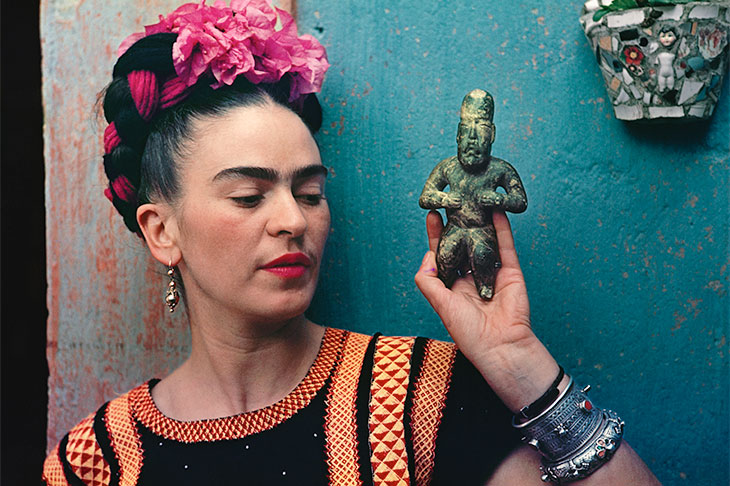
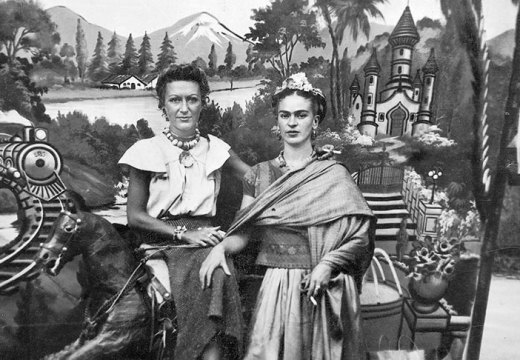
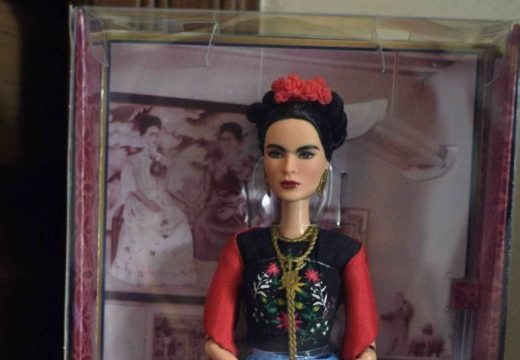
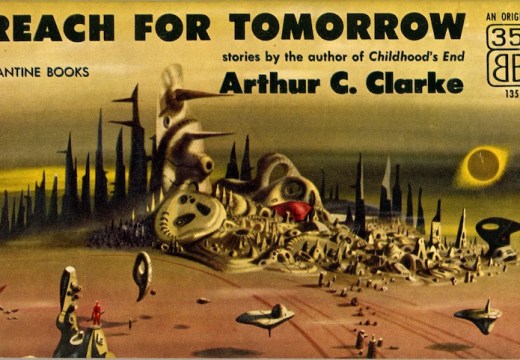









![Masterpiece [Re]discovery 2022. Photo: Ben Fisher Photography, courtesy of Masterpiece London](http://www.apollo-magazine.com/wp-content/uploads/2022/07/MPL2022_4263.jpg)
Master of art – the towering legacy of David Sylvester